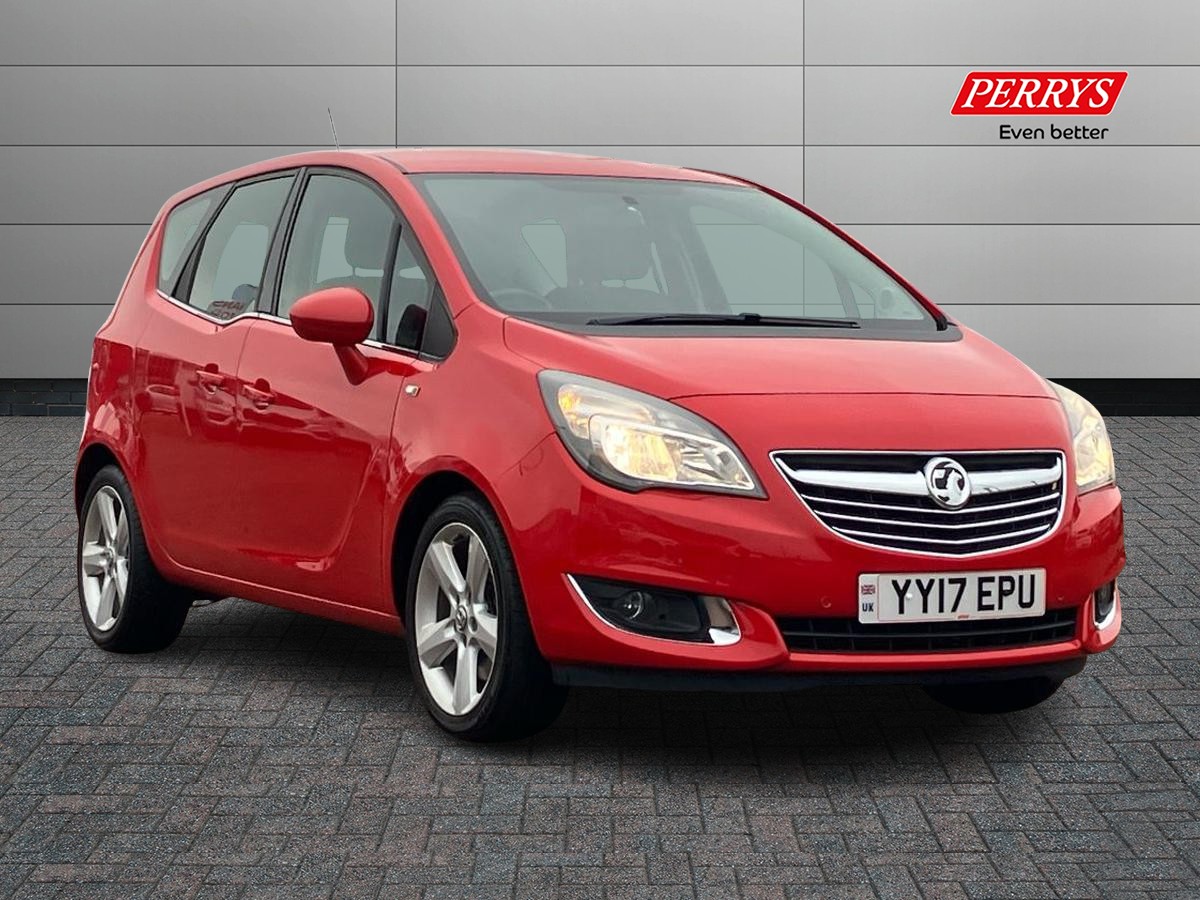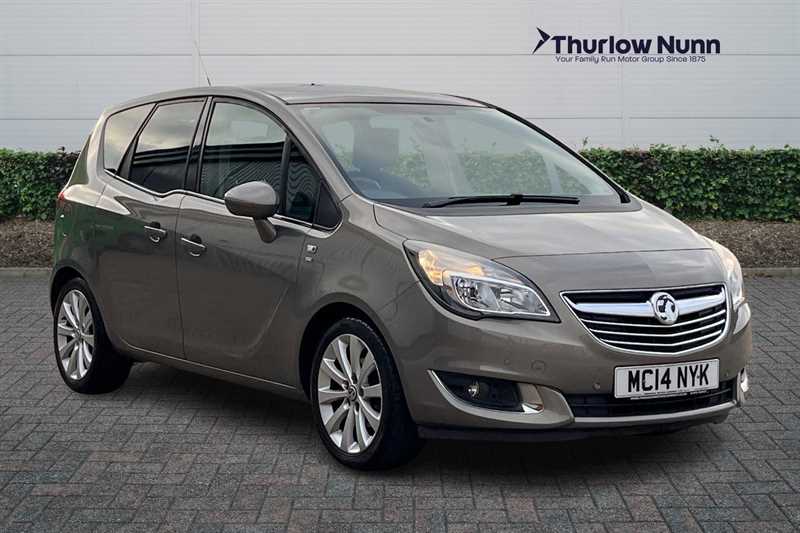Used Vauxhall Meriva for sale: everything you need to know
The Vauxhall Meriva was one of a breed that few car manufacturers offer these days: a compact MPV. Based on the Corsa before Vauxhall became part of the Stellantis brand, the Meriva may not be as fashionable as a Mokka, but it’s a practical and usable family car with low running costs, and is affordable as a used buy too.
The Meriva was offered in a single, five-door body style with five seats, but was a little different from several of its peers in having rear-hinged rear doors, actually making it a little easier to load children into the rear, particularly into car seats. That, plus frugal engines, good build quality and pretty good equipment levels means the Meriva is well worth a look.
If you’re considering a Meriva, then several other cars, many of which are also no longer on sale, could be worth investigating too. The Ford B-Max, Nissan Note, Hyundai ix20, and Citroen C3 Picasso are all potential alternatives, as well as the Honda Jazz, the only model still available new.
Should you buy a Vauxhall Meriva?
A Vauxhall Meriva might not have the style of a Vauxhall Mokka, but if your main priority is ferrying around passengers and things, then there’s still a lot to be said for the Meriva’s MPV body style, and the practical touches that cars like this tended to incorporate.
Vauxhall launched its first Meriva in 2003, while the next generation arrived in 2010, and remained on sale until 2017. Practicality in a small footprint was always the major selling point, with rear seats that could slide backwards and forwards to choose between rear passenger or boot space, or folded completely for a proper flat floor. 2010-2017’s model, the one we’re focusing on here, built on this with rear doors that hinged at the back, making it easier to load children and strap them into car seats.
A facelift in 2014 brought with it some trim and equipment improvements and updated engines, but the range remained broadly consistent throughout its production run. Whichever year of Meriva you’re looking at, you can expect a well-built, practical, spacious family runaround, just one that looks a little light on some of the toys you’d find in new cars.
You’ll find the most difference in the Meriva’s engine range. The entry-level 1.4-litre car is frugal but quite sluggish, but the turbocharged variants are much more lively with barely any penalty in economy. Vauxhall offered two diesels over time, a 1.7-litre originally and a 1.6-litre later on, and the 1.6-litre is definitely the pick of the pair, being smoother and more economical - and notably, the 1.6 meets Euro 6 emissions standards, so won’t attract ULEZ charges for London-based drivers. Equipment levels vary but the Meriva drives well, feeling like a car from the class above in terms of its ride quality, which will be another welcome attribute for family buyers.
When the Meriva was new, the small MPV market was still quite a busy one, and Ford’s nimble B-Max, the stylish Citroen C3 Picasso, and practical models like the Nissan Note, Hyundai ix20, and Honda Jazz are all worth a look if you’re considering a Meriva. The Jazz, incidentally, is still the only one you can still buy new - showing some customers still value flexible seating and maximum interior space over fashionable crossover styling.
A Vauxhall Meriva not for you? We've got 1000s of used cars for sale to suit all budgets and needs
What’s the best used Vauxhall Meriva model to buy?
As you’ll read below, the Vauxhall Meriva’s trim levels can be a bit of a minefield, so recommending the ideal variant is tricky. Tech Line seems like a better buy than the models around it, mostly for the heated seats and steering wheel, and the front and rear parking sensors, though with 17-inch wheels you’ll find a slightly firmer ride than the models on 16-inch wheels.
Engine-wise either of the 1.4-litre petrol turbo units will do the job, both having reasonably peppy performance and good fuel economy. If you want an automatic, then the 120PS 1.4 Turbo is the only one that offers it, but beware its claimed economy is a fair bit lower than the manual. If you tend to cover longer distances, the later 1.6 CDTi diesel fits the bill: it’s frugal and actually the quickest of the bunch.
Used Vauxhall Meriva fuel economy and performance
- Vauxhall Meriva 1.4i: A simple 1.4-litre naturally-aspirated petrol engine opened up the Meriva range before it went off sale, making 100PS. With a standard 5-speed manual gearbox, Vauxhall quoted a 14-second 0-62mph time, and combined economy of 47.1mpg.
- Vauxhall Meriva 1.4i Turbo 120: With a turbocharger, the 1.4-litre petrol developed 120PS and came with either a 5-speed manual or 6-speed automatic gearbox. 0-62mph took 11.3 seconds (11.9 with the automatic), and combined economy was 47.9mpg (39.8 for the auto).
- Vauxhall Meriva 1.4i Turbo 140: The more powerful 1.4 Turbo developed 140PS and featured a 6-speed manual gearbox. 0-62mph dropped to 10.1 seconds, and it could do 44.8mpg.
- Vauxhall Meriva 1.6 CDTi: The 1.6-litre turbodiesel was actually the quickest Meriva. It produced 136PS and came as standard with a 6-speed manual gearbox, getting from 0-62mph in 9.9 seconds, while economy was 64.2mpg combined.
What used Vauxhall Meriva trim levels are available?
Take a look at the Vauxhall Meriva trim levels below and you’d assume them to be a straightforward tiered system, but look at it in detail and it’s actually a little confusing, with some variants higher up the range lacking equipment from the cheaper models below them - a result of some being aimed more at company car drivers, and others at private buyers. If you’re looking at a used Meriva, we’d suggest you double-check its equipment carefully, as you may find even a high-end model doesn’t have a particular feature that a cheaper car does.
- The Vauxhall Meriva Life featured a basic level of equipment that included air conditioning, a Bluetooth and USB-connected stereo, cruise control, 16-inch alloy wheels, front fog lights, and a leather-wrapped steering wheel.
- The Vauxhall Meriva Club added Vauxhall’s ‘FlexRail’ centre console with storage units that could slide backwards and forwards, curtain airbags, ambient lighting, and a 12-volt socket for the rear passengers. No alloy wheels, though - just 16-inch steel wheels with trims.
- The Vauxhall Meriva Tech Line upgraded to 17-inch alloy wheels, a trip computer, heated front seats and a heated steering wheel, folding tray tables for the rear passengers, and front and rear parking sensors - but curiously, didn’t get the FlexRail system, the ambient lighting or the 12-volt socket from the Club.
- The Vauxhall Meriva SE built upon Club spec with a panoramic roof, 17-inch alloys, privacy glass, and all the other kit you’d find on the Tech Line, apart from the parking sensors.
Used Vauxhall Meriva dimensions and boot size
The Vauxhall Meriva’s dimensions are:
- Length: 4300mm
- Width: 1812mm (without mirrors), 1994mm (with mirrors)
- Height: 1615mm
The Vauxhall Meriva’s boot size is:
- 397 litres
- 916 litres with the rear seats folded (1496 litres to roof)
Used Vauxhall Meriva road tax
With almost all Vauxhall Merivas being sold prior to the current flat VED or ‘road tax’ rate came in, you’ll pay tax based on the car’s CO2 emissions when new. This makes the 1.6 CDTi cheapest of the lot, with a 116g/km figure that means a bill of only £35 per year. The 1.4i petrol and 1.4i Turbo 120 manual currently cost £180 per year (based on CO2 of 140 and 139g/km), the 1.4i Turbo 140’s 149g/km means a £200 bill, and the 1.4i Turbo 120 with the automatic gearbox is most expensive: its 166g/km figure means tax of £290 per year.
How much is it to insure a Vauxhall Meriva?
Vauxhall Meriva insurance may be just a little higher than for some rivals, particularly for the diesels, which sat in groups 16-17 depending on trim level. At its most basic, with the 1.4-litre petrol engine, the Meriva started in group 9.


